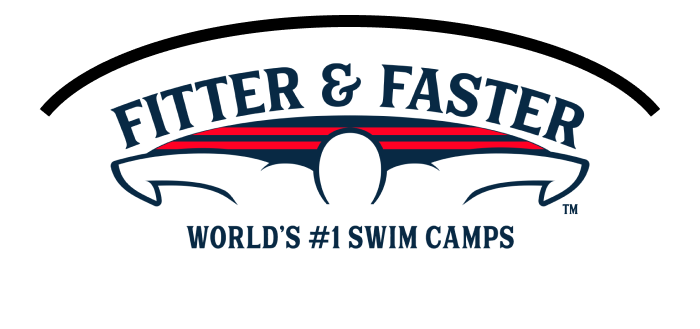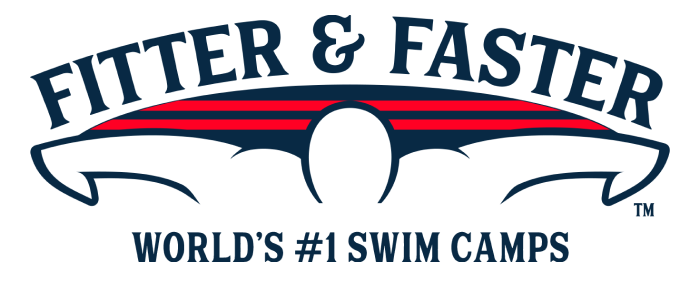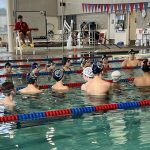Past Clinic: The Essentials for Faster Racing Swim Camp (Ages 10 & Over)
Cunningham Aquatic Complex
801 Heartwood Ave,
Vallejo,
CA 94591
A description of what was covered at this past clinic is below the upcoming clinics.
Upcoming Swim Clinics and Camps
Within 250 miles of Vallejo, CA.
Past Clinic
Introducción
Fitter & Faster is producing a 2-day swim camp for competitive swimmers ages 10 & over at the Cunningham Aquatic Complex in Vallejo, California on April 5 & 6, 2025!
THE ESSENTIALS FOR FASTER RACING (Ages 10 & over)
DAY 1 (Saturday, April 5):
-> Session 1: Starts, Underwaters & Breakouts
-> Session 2: Freestyle Technique
DAY 2 (Sunday, April 6):
-> Session 3: Backstroke Technique
-> Session 4: Flip Turns, Open Turns & Finishes
Scroll down for details on the curriculum!
-> Availability in each session is limited to 24 participants to ensure the highest level learning experience.
-> SAVE when you purchase the "Entire Camp Bundle” for your swimmer.
START TIMES:
DAY 1 (Saturday, April 5):
Session 1: Check in 9 AM, Camp 9:15-11:45 AM
Session 2: Check in 12:30 PM, Camp 12:45-3:15 PM
DAY 2 (Sunday, April 6):
Session 3: Check in 9 AM, Camp 9:15-11:45 AM
Session 4: Check in 12:30 PM, Camp 12:45-3:15 PM
Participantes sugeridos
Our top priority is to provide a world-class learning experience for all participants at all of our camps. This camp has sessions for swimmers ages 10 & older. Participants will range from one-year of competitive swimming experience to AAAA times and faster. If you are the parent of a child under the age of 10 and would like for your child to be considered for this camp, please complete this questionnaire.
Plan de estudios
This camp will equip your swimmer with advanced skills in starts, underwater techniques, freestyle, backstroke, turns, and finishes to race faster and more efficiently. With expert coaching and proven methods, they’ll gain the confidence and competitive edge needed for long-term success in the pool.
Session 1: STARTS, UNDERWATERS & BREAKOUTS
The better a swimmer’s technique is off the starting block, the more speed they will carry into the water. Session 1 of this swim camp will help your swimmer improve their start, underwater dolphin kicking and breakouts! This sequence is not only the fastest part of every race, but it is also the part of the race in which elite swimmers cover the most ground with the most efficiency.
- BLOCK STARTS: To ensure an explosive start, a swimmer needs to set themselves up properly on the block. The elite clinicians will work with participants on the optimal positioning of your swimmer’s entire body to allow for a quick reaction time and optimal speed.
- WATER ENTRY: Starting the race with a smooth entry into the water will boost your swimmer's speed and carry the momentum generated off the block or wall. Becoming skilled at the water entry is crucial for any start and significantly contributes to your swimmers' overall race!
- STREAMLINE: The streamline - when done properly - is the fastest a swimmer travels while in the water. Proper streamlines are even faster than underwater dolphin kicking. Even the most elite swimmers in the world are constantly working on improving their streamline. Your swimmer will get tips to improve their streamline and a better appreciation of what they need to do on every single wall in practice and in races.
- INITIATING UNDERWATER DOLPHIN KICKING: Top age group and elite swimmers maximize their streamline on every single lap. They don’t start their underwater dolphin kicking while they’re still achieving maximum speed in their streamline! They also don’t want to start the underwater dolphin kicking after their streamline has begun to slow. Your swimmer is going to learn how to time when to begin their underwater dolphin kicking.
- POWERFUL UNDERWATER DOLPHIN KICKING: There are a few different techniques that swimmers use when underwater dolphin kicking. The common theme of these techniques is that the best swimmers kick up and down with equal power. We will show your swimmer the different techniques that elite swimmers use and teach them how to implement.
- NUMBER OF UNDERWATER DOLPHIN KICKS: Figuring out the optimal number of kicks off each wall, for each race, is essential to fast swimming. Elite swimmers want to spend only the absolute necessary amount of time underwater to establish speed with each length. They want to avoid losing their breath and taking weak kicks.
- BREAKOUTS: Many swimmers unintentionally add movements in their breakouts that reduce speed by creating drag. In this camp, participants will focus on perfecting their breakout timing to maintain momentum and power into each lap.
Session 2: FREESTYLE TECHNIQUE
Cultivating good habits to swim high level freestyle begins as soon as you learn the stroke. Even if your swimmer is already in high school - it’s never too late to begin practicing techniques that will drastically improve their efficiency, power and times. During session 2, your swimmer will work on techniques to strengthen their bodyline, catch, kick, pull, and breathing pattern.
- BODYLINE: A freestyle race is going to be fastest with the proper bodyline. Even the slightest adjustment of the chin, neck, and/or back can make a huge difference. As swimmers mature in the sport and grow physically, their body position shifts and often bad habits are created. Participants will learn and practice proper posture and engagement of their core to have a strong foundation for better technique - creating a full-body connection for more hydrodynamic and efficient strokes.
- ROTATION: Freestyle is fastest and most efficient when a swimmer’s body is “rotating” around their spine with each stroke. This part of swimming freestyle has a big effect on maintaining a proper bodyline. Participants will practice activating their core muscles to form a powerful connection from head to toe with every stroke.
- KICKING: A swimmer’s kick is the motor behind their freestyle! There are obviously proper and improper ways to kick which we will review at the camp. Just as important, however, is practicing the complexities of how and when swimmers need to “shift gears” in their legs to become stronger and faster racers.
- PULL: The pull in freestyle keeps a swimmer balanced and accelerating forward. This is a skill that needs cultivation throughout all swimmers’ careers. Having an early vertical forearm “catch” enables a swimmer to put immediate pressure back on the water. Properly completing the stroke keeps the swimmer moving forward efficiently. The later the “catch” or not “finishing” the stroke has a negative impact on a swimmer’s bodyline and speed.
Session 3: BACKSTROKE TECHNIQUE
To excel in the backstroke, refining essential techniques like body line, catch, kick, and pull is essential. Swimmers will work with our Elite Clinicians during this session to finesse their skills, ensuring faster and more efficient performances in backstroke races!
- BODY LINE: A competitive swimmer’s bodyline is the key to fast swimming. The name of the game is to eliminate all extra movement of the body including even the slightest bobbing, wiggling. Participants will learn and practice proper posture and engagement of their core to have a strong foundation for better technique - creating a full-body connection for more hydrodynamic and efficient backstroke.
- ROTATION: Backstroke is fastest and most efficient when a swimmer’s body is “rotating” around their spine with each stroke. This part of swimming Backstroke has a big effect on maintaining a proper bodyline. Participants will practice activating their core muscles to form a powerful connection from head to toe with every stroke - resulting in faster backstroke!
- KICK: A swimmer’s kick is the motor behind their Backstroke! There are obviously proper and improper ways to kick which we will review at the camp. Just as important, however, is practicing the complexities of how and when swimmers need to “shift gears” in their legs to become stronger and faster racers.
- PULL: Just like in freestyle, the pull in backstroke keeps a swimmer balanced and accelerating forward. Essentially the best swimmers are creating a paddle with every stroke. The clinicians will work with participants to establish an early vertical forearm “the catch”, enabling the swimmer to put immediate pressure back on the water. Properly completing the stroke keeps the swimmer moving forward efficiently and fast.
Session 4: FLIP TURNS, OPEN TURNS & FINISHES
Quick, powerful turns and finishes are crucial to fast times and winning close races. The top age group and elite swimmers aren't using walls just for turning around - they are used to generate speed and momentum going into the next lap. Elite swimmers are constantly working their turns and looking for areas to improve them. During session 4, we're going to work with your swimmer on taking this crucial part of every race (and practice) to the next level!
- MOMENTUM: The fastest swimmers use walls to generate speed and momentum going into the next lap. Outside of the elite ranks, many swimmers stop or slow down while going into the wall, which kills their momentum! We will work with participants on the intricacies of approaching every wall at top speed and seamlessly initiating their “turn”.
- FLIP TURNS: Flip turns are an opportunity for your swimmers to increase momentum in the middle of a race! Flip turns in which the athletes slow down or have “mechanical” movements negatively impact the speed at which a swimmer comes off the wall. We will work with your swimmer to produce fast flip turns so that they can explode off the walls at maximum speed.
- OPEN TURNS: Elite butterflyers and breaststrokers utilize speed from their last lap to create momentum and even more speed at the beginning of the next lap. Their open turns are actually not “turns”, but more like high-speed pivots. Participants in this session will work on these techniques to have much faster open turns!
- STREAMLINE, UNDERWATER DOLPHIN KICKING, BREAKOUT PROGRESSION: At this session participants will continue to work on the progression covered during session 1.
- FINISHES: Setting yourself up for a fast finish is very similar to setting yourself up for a strong turn in any race. Races are won and lost by hundredths-of-a-second at every swim meet. Many races come down to the last few strokes. At this camp, your swimmer will learn techniques to set themselves up for a well-timed finish when they are still about 10 yards from the wall.
ASK QUESTIONS
Swimmers and parents are invited to ask the clinicians questions during a Q&A session. Gain insight into their training regimen, diet and nutrition, and recovery tactics.
WATCH THE CLINICIANS
Observe clinicians swim at full speed and demonstrate a progression of perfectly executed drills to achieve powerful, efficient and fast swimming.
PUT YOUR SKILLS TO THE TEST
Throughout the camp, swimmers will practice what they've learned with some of the world's most elite Swimmer Clinicians and coaches!
Take a photo, get autographs, and chat with your clinicians!
Inquisitive, Educated Swimmers are Faster Swimmers! Sign up today!
Search all of our clinics...or request a clinic in your area








